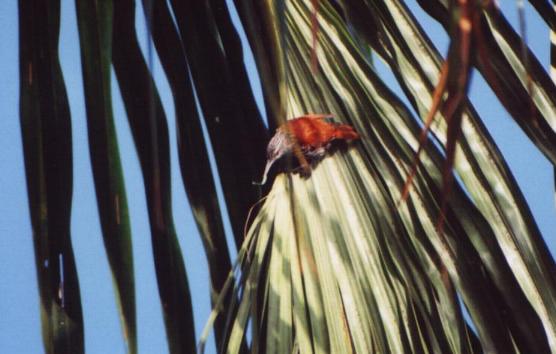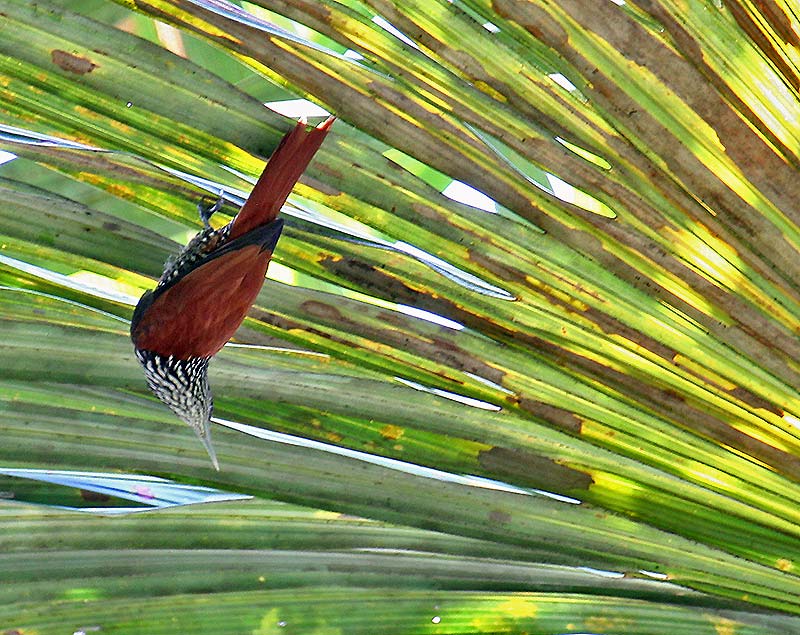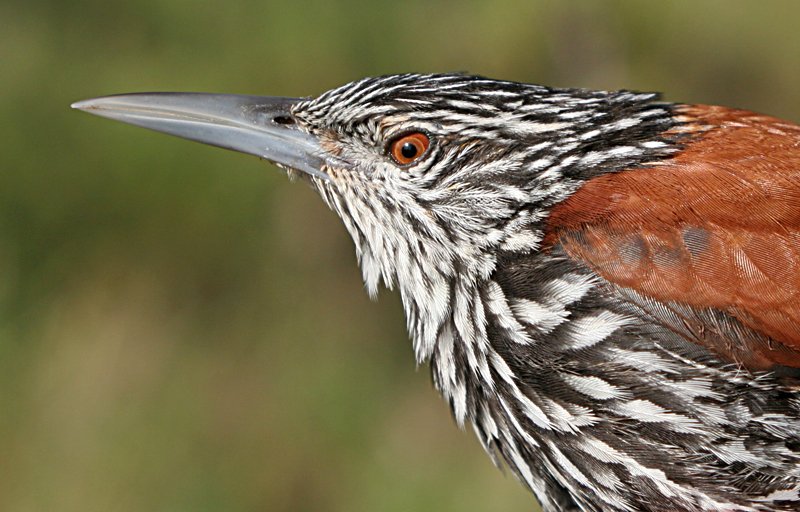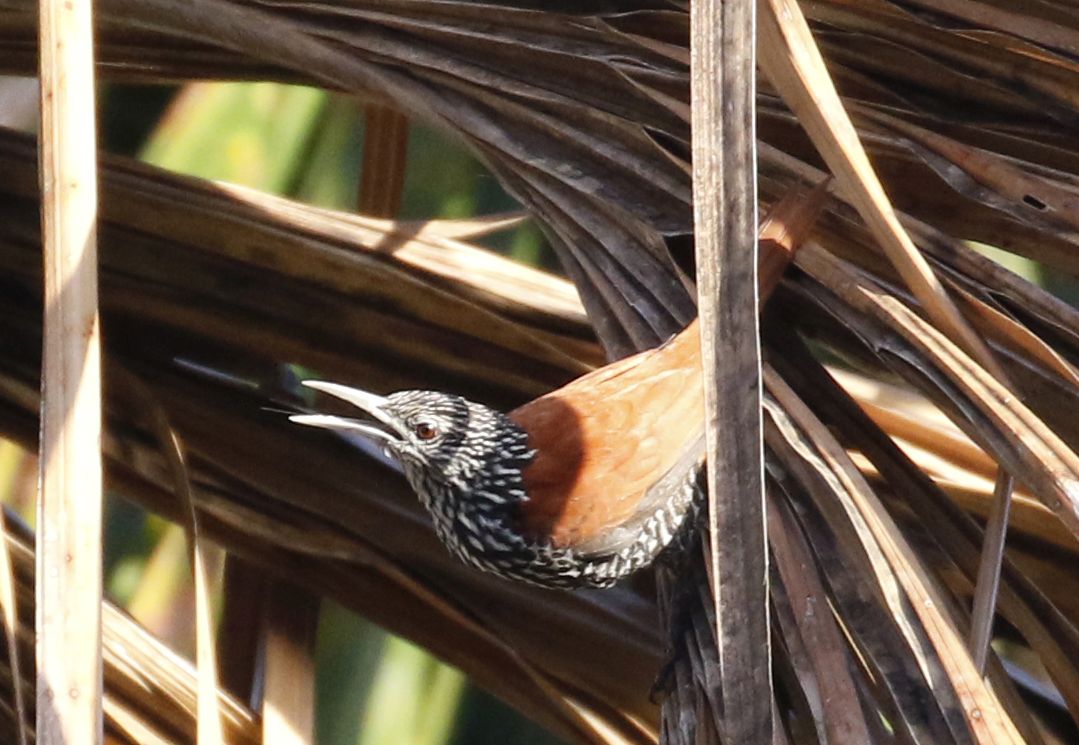 Point-tailed Palmcreeper (Berlepschia rikeri)
Point-tailed Palmcreeper (Berlepschia rikeri)
 Point-tailed Palmcreeper (Berlepschia rikeri)
Point-tailed Palmcreeper (Berlepschia rikeri) |
 |
| Pictures (click on them to enlarge) | ||
|---|---|---|
 © Peter Relson |  © Martin Reid |  © Kristof Zyskowski |
 © Klaas de Jong |
| Point-tailed palmcreeper: a photo made by Peter Relson in Suriname in 2002, near Zanderij airport. As its name in many languages says, the bird is always found near or in Moriche palms (Ite, as in this picture), where it searches for small insects and spiders. It can even look for them hanging up side down as it almost does here on this picture. Otte Ottema recorded the sound of the point-tailed palmcreeper also near Zanderij (Pengel) airport in Suriname in november 2004. Fred Pansa made the video. |
| Birdsounds (click on them to listen) | ||
|---|---|---|
| Sound recording of a Point-tailed Palmcreeper © Otte Ottema, bird guide |
| Video (click the link or the 'play'-button to see) | ||
|---|---|---|
| Video recording of a Point-tailed Palmcreeper © ; |
|
|
||||||||||||||||||||||||||||||||||||||||||||
| Observations through the year | Observations of breeding through the year |
|---|---|
| The 52 reported observations of this bird in Suriname, mainly for the last 50 years up to 2018, have been grouped by month. More birds on one day are counted as one observation. Of course, if the graph should depict the total number of birds seen, the differences between the months could be much more pronounced. | The reported breeding observations of this bird in Suriname. Most observations are about nest with eggs, some about fledglings, or feeding at a nest or the building of a nest. Of the about 5000 nests and eggs found for all species together, about 1/3 comes from the egg collection of Penard between 1896 and 1905. For some reason most collecting then was done in the first half of each year, so the shown distribution does not necessarily reflect the actual breeding preferences. The main dry season in Suriname is reckoned to be from half August to the end of November, the main wet season from half April to half August, but the the timing of begin and end does vary from year to year. Around March a second dry season often occurs. |